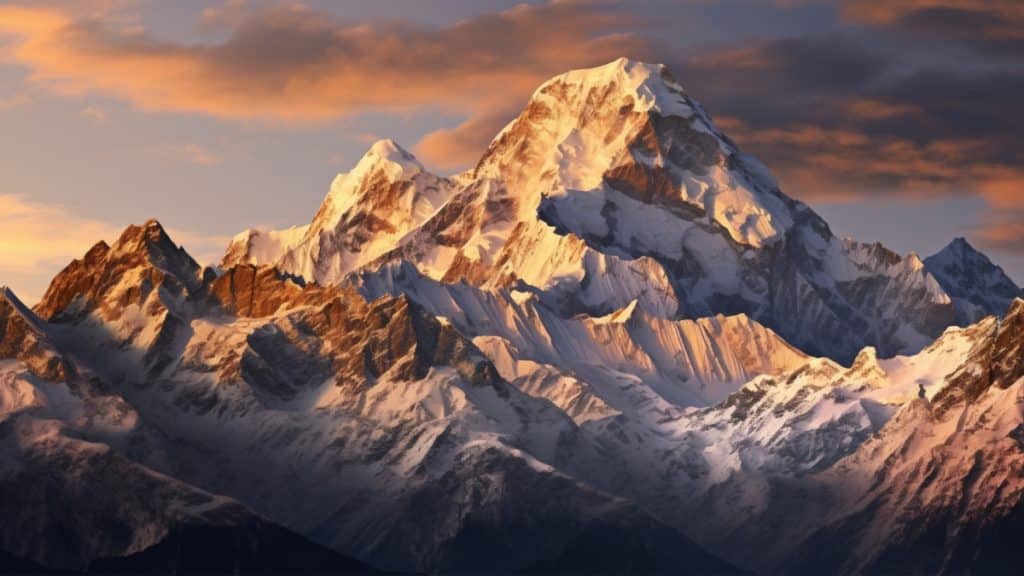Everest, Annapurna, and Manaslu. Each of these trails offers unique experiences, and choosing the right one depends on your preferences and interests.
Everest Region:
Mount Everest, the world’s highest peak, dominates this region. The trek to Everest Base Camp Trek is iconic and draws adventurers from around the globe.
Highlights:
Sagarmatha National Park: Home to diverse flora and fauna, including rare species like the red panda and snow leopard.
Sherpa Culture: Interact with the Sherpa community, known for their mountaineering expertise.
Challenges:
Crowds: Everest attracts a large number of trekkers, especially during peak seasons.
Cost: Trekking to Everest Base Camp can be expensive due to flights to Lukla and other logistics.
Annapurna Region:
The Annapurna Circuit and Annapurna Base Camp treks are popular choices.
Highlights:
Poon Hill: Witness stunning sunrise views over Annapurna and Dhaulagiri ranges.
Manang and Mustang: Explore these culturally rich areas.
Pilgrimage Sites: Visit Muktinath and other sacred places.
Challenges:
Moderate Crowds: While popular, Annapurna trails are less crowded than Everest.
Manaslu Region:
Remote and Less Explored: Manaslu offers a quieter experience.
Highlights:
Manaslu Circuit Trek: Begins at 560m and ascends to 5106m at Larke Pass.
Numri Valley: Gurung, Tamang, Brahmin, and Chhetri communities reside here.
Geographical Diversity: Every day brings new landscapes and environmental variations.
Challenges:Restricted Trail: Manaslu is less frequented due to restricted permits.
cultural aspects of these regions.
The rich cultural tapestry of the Everest, Annapurna, and Manaslu regions in Nepal:
Manaslu Region:The Manaslu Circuit Trek is a hidden gem, promising a captivating blend of country walks, awe-inspiring landscapes, and encounters with ancient cultures.
Landscape: As we ascend along the Buri-Gandaki River, the landscape unfolds like a captivating story. From tranquil sub-tropical valleys to cooler, greener hills, each turn in the trail offers a new chapter.
Culture: Beyond heights and landscapes, the Manaslu Circuit immerses trekkers in the high villages along the route. These settlements are not mere rest stops; they are living museums of heritage. Influenced by Tibetan traditions, the impressive cultures of the Manaslu region come to life:
Ancient Monasteries: Explore monasteries like Pungyen Gompa and Serang Gompa, architectural marvels and spiritual centers for locals.
Annapurna Region:
The Annapurna trails offer a different cultural experience:Gompas and Mane Walls: While the Manaslu region has centuries-old gompas and mane walls, the cultural and traditional aspects you explore on the Annapurna and Everest trekking trails are equally fascinating.
Culture: Along the Annapurna trails:Poon Hill: Witness stunning sunrise views over Annapurna and Dhaulagiri ranges.
Manang and Mustang: Explore culturally rich areas.
Pilgrimage Sites: Visit Muktinath and other sacred places.
Everest Region:
Everest’s cultural aspects are intertwined with the Sherpa community:Sherpa Culture: Interact with the Sherpas, known for their mountaineering expertise.
Sagarmatha National Park: Home to diverse flora and fauna.
Kala Patthar: A viewpoint offering breathtaking views of Everest and neighboring peaks.
Challenges:
Crowds and higher costs due to flights to Lukla.the vibrant festivals celebrated in the Everest, Annapurna, and Manaslu regions of Nepal:
Manaslu Region:
Mani Rimdu Festival:Date: The upcoming Mani Rimdu Festival in 2023 is scheduled for November 8th, 9th, and 10th.
Significance: Mani Rimdu is one of the most important festivals celebrated in Sherpa villages around Mount Everest.
Events:Wang (Blessing): On the full moon day of the 10th month, sacred Mani Rilwu (blessing pills) and Tshereel (long-life pills) are distributed to attendees.
Chham Dance: Witness sacred dance performances called “Chham,” depicting how Buddhism triumphed over Bon.
Sand Mandala: Observe the intricate Sand Mandala created by monks at Tengboche Monastery.
Annapurna Region:
Dashain:Date: Celebrated in late September or early October.
Significance: Dashain commemorates the victory of good over evil.
Activities: Families and friends come together, exchange gifts, and participate in cultural events.
Tihar (Deepawali):
Date: Also known as the Festival of Lights, Tihar occurs a few weeks after Dashain.
Significance: Dedicated to Goddess Laxmi, the deity of freedom and prosperity.
Traditions: Houses are adorned with oil lamps, and animals (such as cows, dogs, and crows) are worshiped.
Everest Region:
Mani Rimdu Festival (also celebrated in Everest region):Duration: Nineteen days, with three days open to the public.
Purpose: Commemorates Buddhism’s victory over Bon.
Monastic Performances:Fearful Masks and Costumes: Monks wear various masks and costumes.
Dance Forms: Performances depict the triumph of Buddhism.
Other Festivals:Losar: Tibetan New Year celebrated by Sherpas.
Saga Dawa: Honors Buddha’s birth, enlightenment, and death.
Lhosar: Sherpa New Year with dancing, feasting, and rituals1.
In summary:
Everest offers adventure, crowds, and stunning vistas.
Annapurna combines culture, pilgrimage sites, and diverse landscapes.
Manaslu provides remoteness, varied terrain, and a quieter trekking experience. Choose wisely based on your preferences.
In summary, these festivals offer glimpses into the rich cultural heritage of Nepal, blending ancient traditions with breathtaking mountain landscapes.
